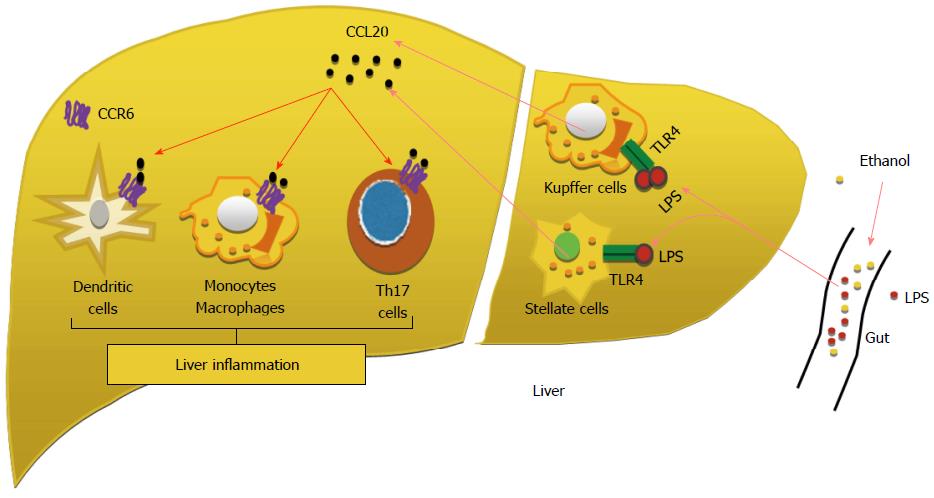Copyright
©The Author(s) 2016.
World J Gastroenterol. Apr 21, 2016; 22(15): 3892-3906
Published online Apr 21, 2016. doi: 10.3748/wjg.v22.i15.3892
Published online Apr 21, 2016. doi: 10.3748/wjg.v22.i15.3892
Figure 3 Model depicting the roles of CCL20 in alcoholic steatohepatitis.
Excessive alcohol drinking results in elevated levels of bacterial products, such as lipopolysaccharides (LPS), in the portal blood. LPS, via targeting TLR4, stimulates Kupffer cells and hepatic stellate cells to produce CCL20. This chemokine activates dendritic cells (DCs) and monocytes/macrophages to produce proinflammatory cytokines by targeting CCR6, leading to liver inflammation[62].
- Citation: Shasthry SM, Sarin SK. New treatment options for alcoholic hepatitis. World J Gastroenterol 2016; 22(15): 3892-3906
- URL: https://www.wjgnet.com/1007-9327/full/v22/i15/3892.htm
- DOI: https://dx.doi.org/10.3748/wjg.v22.i15.3892









